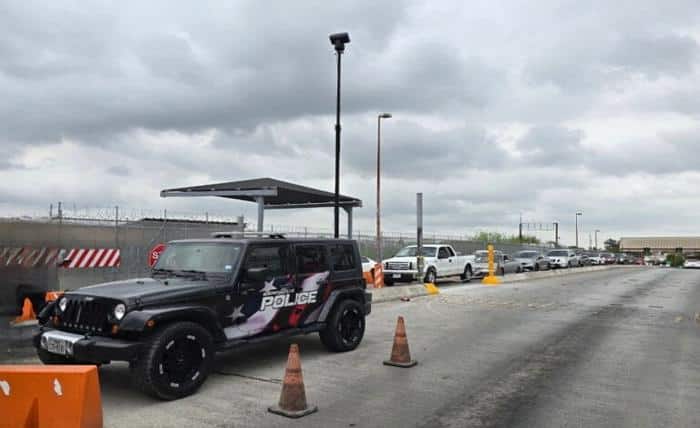
National security and border control have become paramount, law enforcement agencies are increasingly turning to advanced technologies to bolster their capabilities. Among these innovations, advanced checkpoint scanners have emerged as a pivotal tool in enhancing border security. These sophisticated systems play a critical role in patrol operations, allowing agencies to ensure safe and efficient monitoring of borders while streamlining processes that can often be tedious and time-consuming.
The Evolution of Checkpoint Scanners
Checkpoint scanners have come a long way since their inception. Older systems relied heavily on manual inspections and basic imaging techniques, which often proved insufficient in detecting concealed threats. With the rise of advanced technologies, modern scanners now incorporate various innovative features such as 3D imaging, artificial intelligence, and enhanced detection algorithms. These advancements enable border patrol agents to identify potential risks with a higher degree of accuracy and speed, significantly improving overall border security.
Modern checkpoint scanners utilize a combination of X-ray, gamma-ray, and even terahertz imaging technologies. This multifaceted approach allows for the detection of a variety of objects, including weapons, drugs, and other contraband that may be hidden within vehicles or cargo. As the threats facing nations evolve, so too must the methods employed to combat them. Advanced scanners are at the forefront of this evolution, providing border patrol operations with the tools they need to stay one step ahead of potential threats.
Efficiency in Patrol Operations
One of the major advantages of advanced checkpoint scanners is their ability to enhance the efficiency of patrol operations. Traditional methods often require significant time and resources, with agents manually inspecting each vehicle and cargo shipment. This process can lead to long wait times at border crossings and contribute to congestion, making it easier for illicit activities to occur undetected.
With the implementation of advanced checkpoint scanners, patrol agents can process vehicles more quickly while maintaining a high level of scrutiny. These scanners, including specialized border patrol checkpoint scanners, can rapidly generate images and provide real-time data analysis, allowing agents to make informed decisions without the need for extensive manual inspections. Consequently, this efficiency not only improves traffic flow but also enhances overall situational awareness, enabling agents to focus their attention on high-risk vehicles and individuals.
Improving Detection Capabilities
The primary goal of any border security operation is to detect and prevent illegal activities. Advanced checkpoint scanners significantly improve detection capabilities through enhanced imaging technologies and data analytics. This allows for the identification of anomalies in scanned images that may warrant further investigation. Modern scanners can flag suspicious vehicles, trigger alerts for agents, and even provide predictive analysis based on historical data, enabling agents to anticipate potential threats.
Moreover, the integration of artificial intelligence into these systems allows for continuous learning and improvement. As scanners analyze more data, they become increasingly adept at recognizing patterns, differentiating between legitimate and suspicious items. This technological evolution provides border patrol agents with an invaluable resource, enabling them to operate more effectively and efficiently.
Interoperability with Other Technologies
Another significant benefit of advanced checkpoint scanners is their ability to integrate seamlessly with other technologies used in border security operations. These systems can be connected to biometric identification systems, license plate recognition technology, and even drones for aerial surveillance. By creating a comprehensive network of security measures, agencies can enhance their situational awareness and response capabilities.
For instance, when a scanner identifies a potentially suspicious vehicle, the information can be immediately cross-referenced with biometric databases or other surveillance data, allowing agents to assess the situation more thoroughly. This interoperability not only strengthens overall security but also promotes collaboration among different law enforcement agencies, as data can be shared in real-time for more coordinated efforts in safeguarding borders.
Training and Adaptation
The successful implementation of advanced checkpoint scanners in patrol operations extends beyond simply deploying the technology. It also requires effective training and adaptation on the part of border patrol agents. While these scanners offer powerful tools for detection and analysis, agents must be well-versed in how to operate them effectively and interpret the data they provide.
Training programs should emphasize not only the technical aspects of using checkpoint scanners but also the importance of critical thinking and decision-making in real-time scenarios. Agents need to be equipped with the skills to discern when a flagged vehicle requires further inspection and when it can be cleared for passage. Continuous training and updates on emerging technologies are essential to ensure that patrol agents remain adept at leveraging these advanced tools in their operations.
Addressing Privacy Concerns
As with any technology used in border security, the introduction of advanced checkpoint scanners raises important questions regarding privacy and civil liberties. It is crucial for law enforcement agencies to navigate these concerns carefully while implementing effective security measures. Transparency in how data is collected, stored, and used can help build public trust and mitigate fears of overreach.
Implementing strict protocols on data management and ensuring that information obtained from checkpoint scanners is used solely for security purposes can help address privacy issues. Engaging with community stakeholders and fostering open dialogue can further enhance public perception and acceptance of these technologies.
Strengthening National Security
Ultimately, the integration of advanced checkpoint scanners into border patrol operations serves to strengthen national security. By improving detection capabilities, enhancing operational efficiency, and facilitating collaboration among agencies, these technologies play a crucial role in preventing illegal activities and ensuring the safety of a nation’s borders. As threats continue to evolve, the commitment to leveraging advanced technology will remain a cornerstone of effective border security strategies. The use of advanced checkpoint scanners is not just a temporary solution but a necessary evolution in the ongoing effort to safeguard borders and protect citizens.




